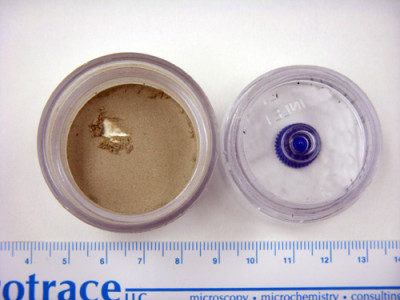Airborne Particulate Matter
The identity of particles in airborne dust is of interest to a variety of individuals, organizations, and corporations. Reasons for studying airborne and settled dust, which may originate from indoor or outdoor samples, include health concerns, environmental pollution, or contamination investigations such as darkening observed in or on homes. Investigations rely primarily upon polarized light microscopy to study wipes, swabs, bulk dust samples, filter residues or tape lifts. When applicable, transmission electron microscopy or scanning electron microscopy with energy dispersive x-ray spectroscopy may be used to study these samples. Particles of interest often include soot, carbon black, asbestos, char, mold, pollen, fly ash, metal, or paint; however, a wide range of other very specific particles have been the focus of our analyses as well.
Related standardized methods: ASTM E2864
How May We Help You?
Contact usto discuss your project in more detail.








